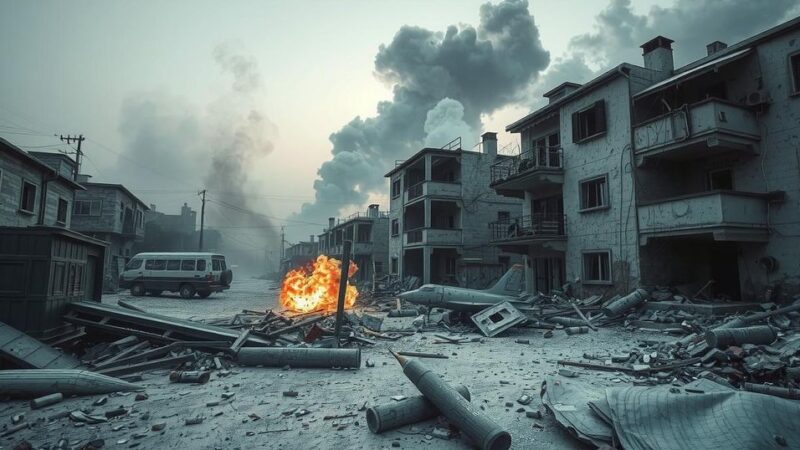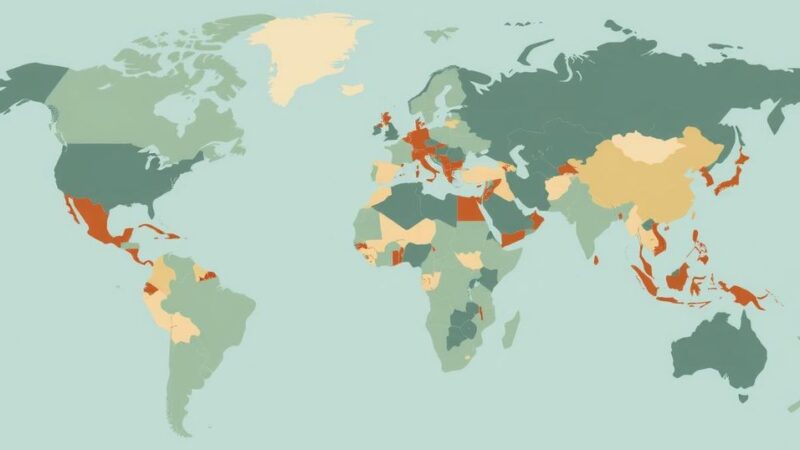The year 2024 saw intensified conflict in the Middle East, notably between Israel and Hamas following the October 7, 2023 attacks, leading to severe casualties and humanitarian crises in Gaza. Israel also engaged in military operations against Hezbollah in Lebanon and clashed directly with Iran after years of covert tensions. The fall of Assad’s regime in Syria further illustrates the shifting landscape, as new powers emerge in a fractured region.
The year 2024 witnessed significant turmoil and warfare across the Middle East, culminating in the intensified conflict between Israel and Hamas, and broader regional implications involving Lebanon and Iran. Following Hamas’s attacks on October 7, 2023, Israel launched relentless operations in Gaza that resulted in catastrophic humanitarian conditions for its residents, displacing hundreds of thousands and leading to an estimated death toll exceeding 45,000. Israel’s military strategies led to territorial incursions not only in Gaza but also into southern Lebanon, targeting Hezbollah forces, with which it engaged following a history of cross-border tensions.
In 2024, Israel also initiated confrontations with Iran for the first time in over two decades, marked by a notable airstrike on the Iranian embassy in Damascus and subsequent retaliatory actions. The assassination of key Hamas and Hezbollah leaders exacerbated the situation, prompting retaliatory strikes and raising the specter of broader conflict. Meanwhile, in Syria, the demise of Bashar al-Assad’s regime underscored a seismic shift in regional power dynamics, with Turkish-backed rebels seizing control widely amid the disintegration of Assad’s military support.
As nations grappled with these escalations, Israel’s Prime Minister Binyamin Netanyahu faced international scrutiny over war crimes allegations while experiencing a surge in domestic support, bolstered by military operations against its adversaries. The unfolding events not only defined the current geopolitical landscape but also set the stage for potential future confrontations in an already volatile region.
The context of 2024’s upheaval revolves around heightened military engagement, humanitarian crises, and geopolitical shifts within the Middle East. The October 7 attacks by Hamas initiated Israel’s full-scale military response in Gaza, marking a significant escalation in a long-standing conflict. Additionally, the involvement of regional powers such as Hezbollah in Lebanon and Iran introduced a new dimension to the conflict, as Israel diversified its military objectives beyond traditional borders. Furthermore, the fall of Assad in Syria catalyzed changes in regional governance and power structures, posing questions regarding stability and future alliances in the area. These dynamics together illustrate a complex web of conflict and diplomacy that has vast implications for security and humanitarian conditions in the region.
In summary, the events of 2024 encapsulate a year of significant conflict in the Middle East, characterized by Israeli military operations against both Hamas and Hezbollah, as well as unprecedented direct confrontations with Iran. The ensuing humanitarian crisis in Gaza and the dramatic overthrow of the Assad regime in Syria reflect not only immediate consequences but also broader implications for regional power balances and future conflicts. The evolving situation demands careful scrutiny from the international community as it navigates the complex interplay of military, political, and humanitarian challenges.
Original Source: www.france24.com






